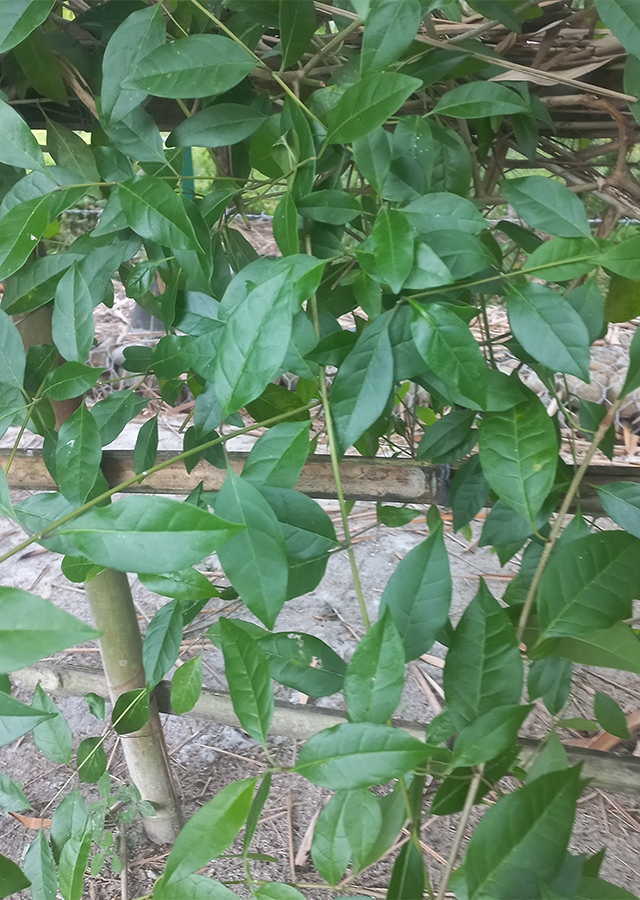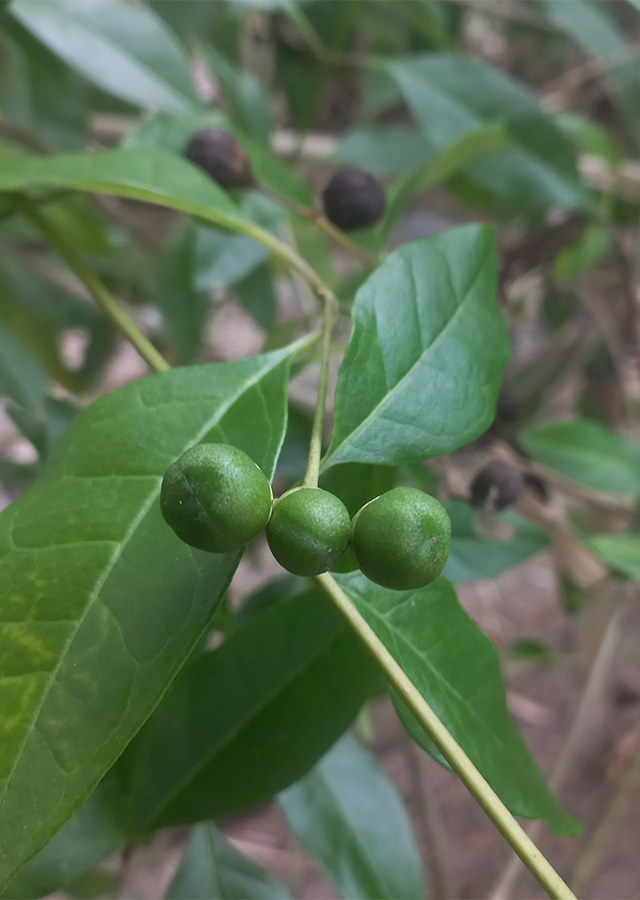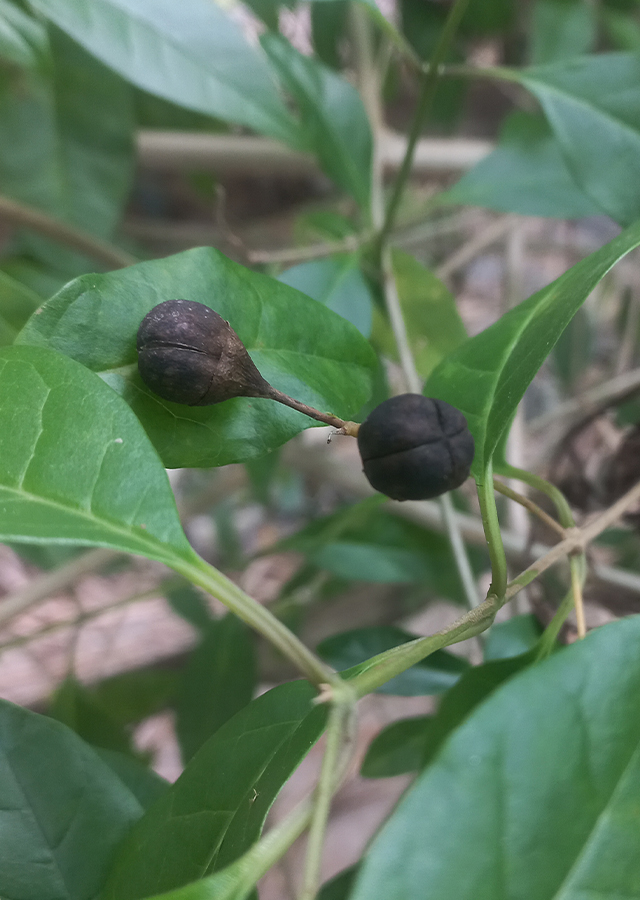Seaside Clerodendron
Volkameria inermis L.
Lamiacea
Location in our garden
Orchard



Synonym
Clerodendrum buxifolium (Willd.) Spreng.
Clerodendrum capsulare Blanco
Clerodendrum commersonii (Poir.) Spreng.
Habitus
Shrubs. An evergreen erect bush that grows up to about 3 m tall, or a climber up to 13 m long
Part Used
Leaves
Fruit
Growing Requirements
Full Sunshine
Need Shade
Habitat
Riverbanks
Forest
Shrublands
Overview
Its native distribution covers Southern China, India, Myanmar, Peninsular Malaysia, Singapore, Australia, and Polynesia. The plant is harvested from the wild for local use as a medicine. It is sometimes cultivated as a medicinal plant, especially in India, and is commonly grown as an ornamental and hedge plant in tropical areas.
Vernacular Names
Yasamen katheb (Arabic), Volkameria (French), Ku lang shu (Chinese), Ibota-kusagi (Japanese), Bunga pawang (Malay)
Agroecology
Grows on open coastal areas,such as along the beach, in mangroves, along tidal rivers; also found along rivers and in swamps further inland; favouring sandy soils but also found on clays at elevations up to 100 m.
Morphology
- Stems - erect, branches are slender while the knots are not annulated.
- Leaves - Its stalked leaves have membranous leaf blades that are oval or narrowly lance-shaped, not covered with hair when mature, and 3.8–8.8 by 1.8–4.3 cm, with inconspicuous veins.
- Flowers - Its flowers grow in groups of 3–7 on the end of branches (axils). Its petals are white or tinged purple, and fragrant.
- Fruits - Its drupe (fruit) is drop-shaped, bright green turning black or brown, and 0.8 cm in diameter.
Cultivation
Propagated by seeds, softwood cuttings, cuttings of half-ripe wood, root cuttings and division of suckers.
Chemical Constituents
Flavonoids, sterols, flavones, triterpenes, diterpenes, quinones, neolignans, stearoptin with an apple-like odor, pentadecanoic acid-ß-D-glucoside, acetin and apigenin, new diterpenoids clerodane, cleroindermin, apigenin, cardiac glycosides, anthraquinones, phenolic saponins, tannins, iridoids, steroids, fixed oils, essential oils, and lignins.
Traditional Medicinal Uses
- A decoction of the root is used as a bitter, febrifuge and general alterative. It is used in the treatment of intermittent fevers.
- The finely ground roots are used as a remedy for an upset stomach, especially if this is caused by poisonous seafood. This treatment is often combined with a decoction of the leaves, simultaneously employed as a bath but also as a drink.
- The root is boiled in oil and used as a liniment that is rubbed into affected areas when treating rheumatism.
- The leaves are alterative, bitter, depurative and febrifuge. A decoction of roasted leaves is considered a remedy for beriberi.
- A decoction of the leaves, or a poultice of the ground leaves, is applied topically in the treatment of skin diseases, swellings, itches etc., and help to prevent suppuration.
- The seeds are reportedly used as a remedy for an upset stomach, especially when this is caused by poisonous seafood.
- An extract of the plant has shown antiviral activity against hepatitis b.
Part Used
Reference Sources
- Fern, Ken. Useful Tropical Plants. (2021). Volkameria inermis. https://tropical.theferns.info/viewtropical.php?id=Volkameria+inermis. 17-12-21
- StuartXchage. Philippines Medicinal Plant. (2019). Volkameria inermis. http://www.stuartxchange.org/Mangongot.html. 17-12-21
- Flora & Fauna Web. Volkameria inermis. https://www.nparks.gov.sg/florafaunaweb/flora/1/8/1823. 17-12-21


